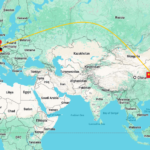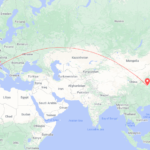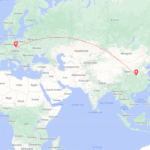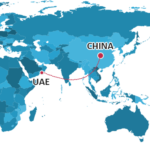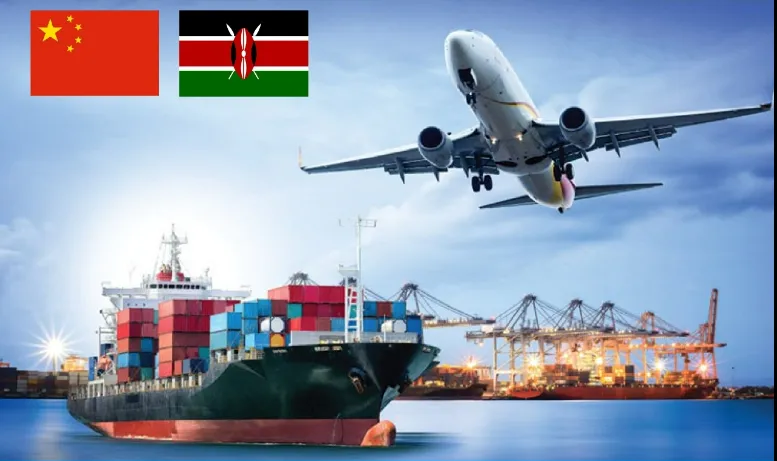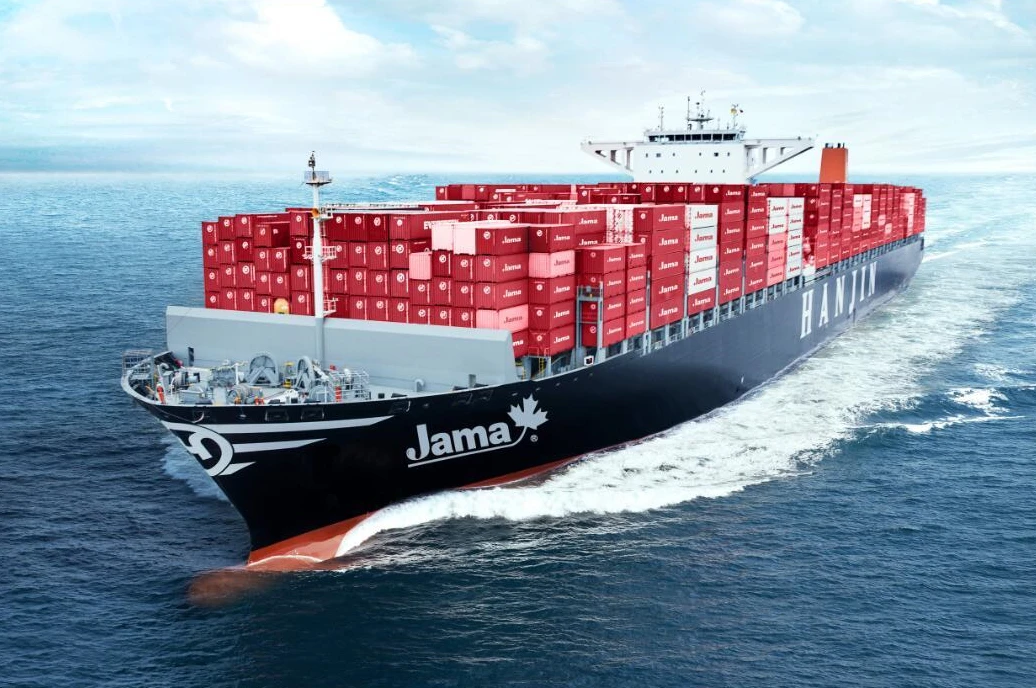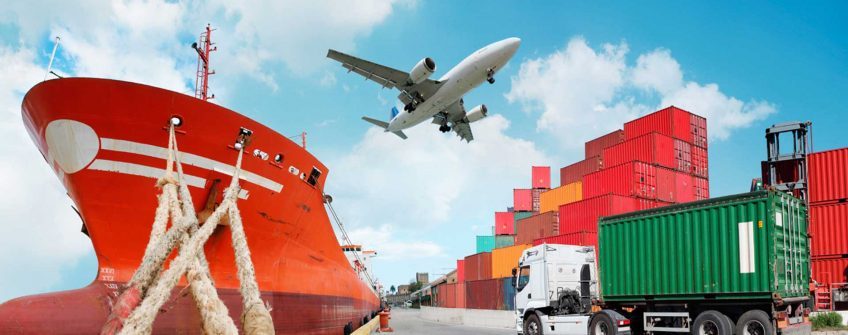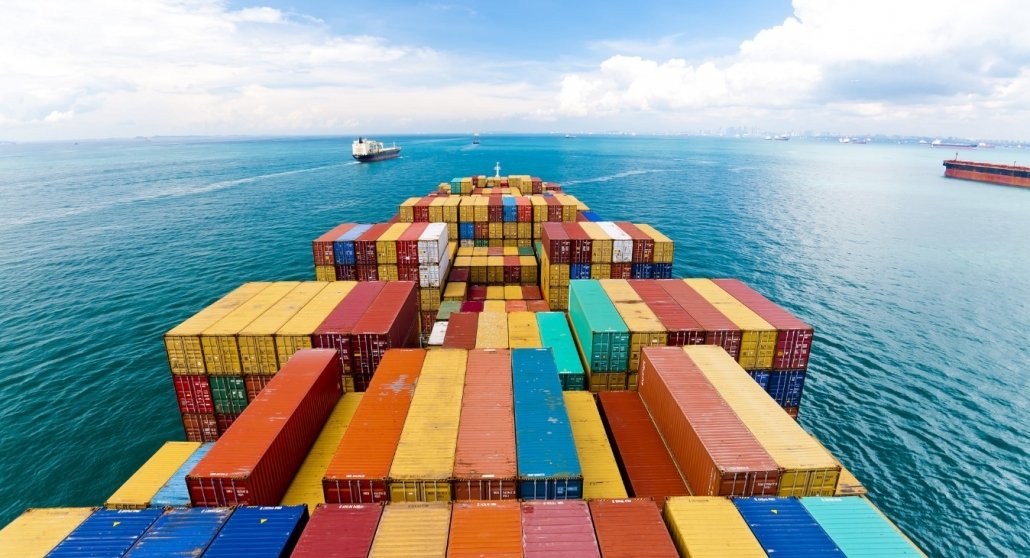International shipping between China and the USA plays a pivotal role in global trade, forming the backbone of numerous business operations and consumer supply chains. The vast array of products ranging from electronics to textiles and machinery are regularly shipped across the Pacific Ocean, making this route one of the busiest and most critical in the world. For businesses looking to import goods, understanding the intricacies of this process is essential. This is where freight forwarding companies like Dantful International Logistics come into play, offering expertise and comprehensive services that ensure your goods are transported efficiently, safely, and cost-effectively.
In this blog, we will delve into the various aspects of shipping from China to the USA, from the different shipping options and key considerations to understanding the role of freight forwarders and the benefits of the Delivered Duty Paid (DDP) model. Whether you are a seasoned importer or new to international shipping, this guide will provide valuable insights to help you navigate the complexities of global logistics.
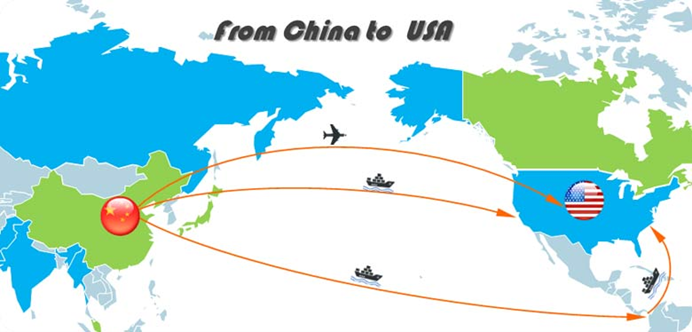
Table of Contents
1. Overview of Shipping Options
When it comes to shipping goods from China to the USA, businesses primarily have two options: Air Freight and Ocean Freight. Each method has its own set of advantages and disadvantages, and the choice largely depends on factors such as cost, speed, and the nature of the goods being shipped.
Air Freight
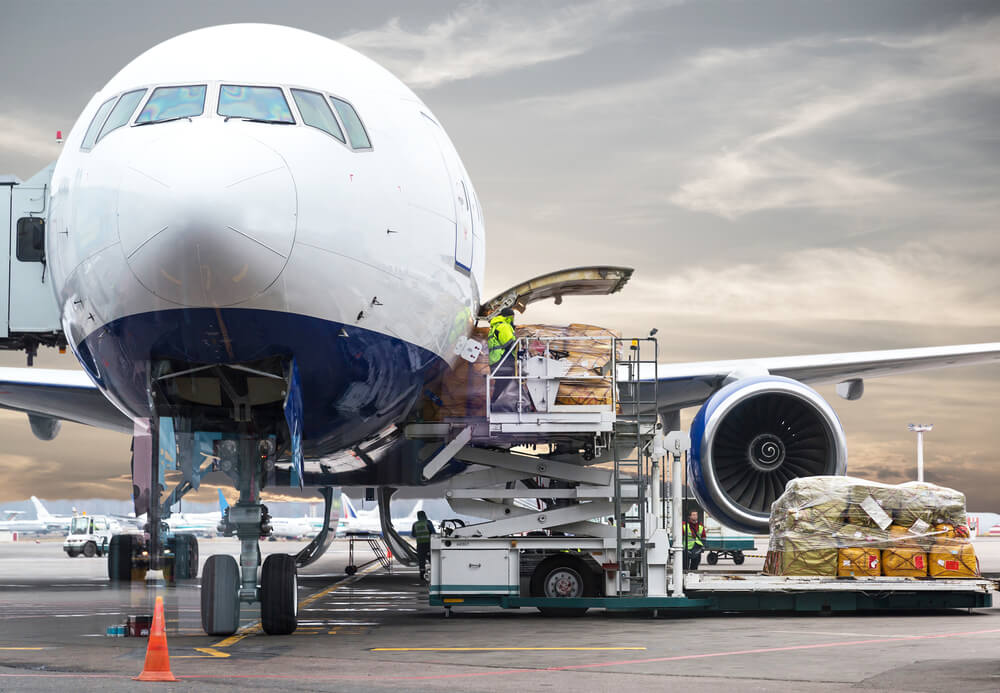
Air Freight is the preferred option for businesses that need their goods delivered quickly. It is ideal for high-value, time-sensitive goods or perishable items. The main benefits of air freight include:
- Speed: Air freight is significantly faster than ocean freight. Depending on the origin and destination, goods can be delivered within a few days.
- Reliability: Air freight schedules are more reliable compared to sea freight, with fewer delays.
- Security: The stringent security measures at airports reduce the risk of theft and damage to goods.
However, there are also some disadvantages to consider:
- Cost: Air freight is generally more expensive than ocean freight, especially for larger shipments.
- Capacity: There are limitations on the size and weight of shipments that can be transported by air.
Ocean Freight
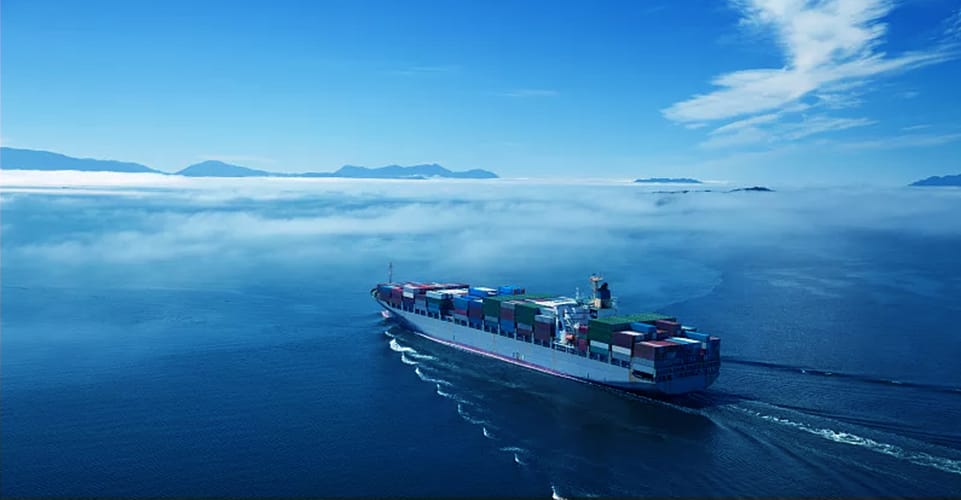
Ocean Freight is the most common method for shipping large volumes of goods. It is suitable for businesses that do not require immediate delivery and are looking to minimize shipping costs. The main benefits of ocean freight include:
- Cost-effectiveness: Ocean freight is significantly cheaper than air freight, making it ideal for bulky and heavy shipments.
- Capacity: Ships can handle large volumes of goods, accommodating oversized items that are not suitable for air transport.
- Versatility: Various types of cargo, including hazardous materials and oversized equipment, can be shipped by sea.
On the downside:
- Time: Ocean freight is slower, with transit times ranging from a few weeks to over a month, depending on the route.
- Reliability: Sea freight schedules are subject to delays caused by weather conditions, port congestion, and other factors.
- Risk: There is a higher risk of damage or theft compared to air freight, although proper packaging and insurance can mitigate these risks.
By understanding the pros and cons of each shipping method, businesses can make informed decisions that align with their operational needs and budget constraints.
2. Key Considerations for Shipping From China to the USA
Shipping goods from China to the USA involves several critical considerations that can impact the efficiency and cost of the logistics process. Here are some key factors to keep in mind:
Understanding Incoterms
Incoterms (International Commercial Terms) are standardized trade terms used in international contracts to define the responsibilities of buyers and sellers. Key Incoterms to understand include:
- FOB (Free on Board): The seller is responsible for transporting the goods to the port of shipment and loading them onto the vessel. The buyer assumes responsibility from that point onwards.
- CIF (Cost, Insurance, and Freight): The seller covers the cost of the goods, insurance, and freight to the destination port, but the buyer is responsible for import duties and customs clearance.
- EXW (Ex Works): The buyer assumes full responsibility for transport and costs from the seller’s premises.
- DDP (Delivered Duty Paid): The seller is responsible for delivering the goods to the buyer’s location, including all costs and risks, such as transportation, insurance, and import duties. This is a comprehensive option that simplifies the process for importers.
Customs Regulations and Clearance
Navigating customs regulations is a crucial aspect of international shipping. Both China and the USA have specific regulations and documentation requirements that must be adhered to, including:
- Commercial Invoice: A detailed invoice that includes information about the goods, their value, and the terms of sale.
- Packing List: A document that provides details about the contents, dimensions, and weight of each package.
- Bill of Lading/Air Waybill: A contract between the shipper and carrier that outlines the terms and conditions of the transport.
- Import Licenses and Permits: Certain goods may require specific licenses or permits for importation into the USA.
Failure to comply with these regulations can result in delays, fines, or even confiscation of goods. Partnering with a knowledgeable freight forwarder like Dantful International Logistics can help ensure smooth customs clearance and compliance with all regulatory requirements.
Importance of Insurance Services
Shipping goods internationally involves inherent risks, including damage, loss, or theft. Therefore, securing insurance services is highly recommended. Insurance provides financial protection and peace of mind, covering the value of the goods in the event of unforeseen incidents. It is important to choose a comprehensive insurance policy that covers the full value of the shipment and is tailored to the specific needs of the goods being transported.
By considering these key factors, businesses can better prepare for the complexities of shipping from China to the USA and mitigate potential risks, ensuring a smooth and efficient logistics process.
3. Shipping Routes and Port Information
Understanding the shipping routes and major ports involved in shipping from China to the USA is crucial for efficient logistics planning. The choice of ports and routes can significantly impact transit times, costs, and the overall effectiveness of the shipping process.
Major Shipping Ports in China
China boasts several major ports that handle a significant portion of the country’s international trade. Some of the key ports include:
- Shanghai Port: As the world’s busiest container port, Shanghai handles a massive volume of goods, making it a central hub for international shipping.
- Shenzhen Port: Located in the Guangdong province, Shenzhen is the world’s fourth busiest port and a major gateway for goods manufactured in southern China.
- Ningbo-Zhoushan Port: Situated south of Shanghai, Ningbo-Zhoushan is known for its capacity to handle bulk cargo and container shipments, making it a versatile port for various types of goods.
- Guangzhou Port: Another major port in southern China, Guangzhou is known for its efficiency and connectivity to the Pearl River Delta, a major manufacturing area.
Major Receiving Ports in the USA
The USA also has several key ports that are critical in receiving goods shipped from China:
- Port of Los Angeles: The busiest port in North America, the Port of Los Angeles handles a substantial volume of trade with China, making it a primary entry point for goods.
- Port of Long Beach: Adjacent to the Port of Los Angeles, Long Beach is another major hub for goods arriving from Asia, offering extensive facilities and services.
- Port of New York and New Jersey: Serving the East Coast, this port is a vital gateway for goods destined for the eastern United States and beyond.
- Port of Miami: Known for its connections to Latin America, the Port of Miami also handles a significant amount of trade with China, particularly for goods destined for the southeastern USA.
Common Shipping Routes and Transit Times
Shipping routes between China and the USA are well-established and optimized for efficiency. Common routes include:
- Trans-Pacific Route: This route connects major Chinese ports to the West Coast of the USA, including Los Angeles and Long Beach. Transit times typically range from 14 to 21 days, depending on the specific ports and weather conditions.
- Panama Canal Route: For shipments destined for the East Coast, the Panama Canal route is often used. This route connects Chinese ports with East Coast ports such as New York and Miami, with transit times ranging from 25 to 35 days.
Understanding these routes and the associated transit times can help businesses plan their shipping schedules and manage expectations for delivery timelines.
4. Cost Factors in International Shipping
The cost of shipping goods from China to the USA can vary widely based on several factors. Understanding these cost components can help businesses budget effectively and optimize their shipping strategies.
Breakdown of Typical Shipping Costs
Shipping costs are composed of various elements, including:
- Freight Charges: The base cost of transporting goods, which can vary based on the mode of transport (air or ocean) and the weight/volume of the shipment.
- Fuel Surcharges: Additional charges that reflect fluctuations in fuel prices, applicable to both air and ocean freight.
- Terminal Handling Charges (THC): Fees for handling and processing goods at the port or airport terminals.
- Documentation Fees: Costs associated with preparing and processing necessary shipping and customs documentation.
- Customs Duties and Taxes: Import duties and taxes levied by the destination country, which can vary based on the type and value of goods.
- Insurance: The cost of insuring the goods against loss, damage, or theft during transit.
Factors Influencing Shipping Rates
Several factors can influence the overall shipping rates, including:
- Weight and Volume: Heavier and larger shipments generally incur higher freight charges.
- Type of Goods: Certain goods, such as hazardous materials or perishable items, may require special handling and incur additional costs.
- Shipping Season: Rates can fluctuate based on demand, with peak seasons (e.g., holiday periods) typically seeing higher rates.
- Shipping Routes: The choice of route can impact costs, with direct routes often being more expensive than routes with multiple stops or transfers.
- Carrier and Service Level: Different carriers and service levels (e.g., expedited shipping) can have varying rates.
Getting the Best Shipping Rates
To secure the best shipping rates, businesses should:
- Plan Ahead: Early planning can help secure better rates and ensure availability during peak seasons.
- Consolidate Shipments: Combining smaller shipments into larger ones can reduce costs through economies of scale.
- Negotiate with Carriers: Building relationships with carriers and freight forwarders can lead to more favorable terms and rates.
- Choose a Reliable Freight Forwarder: Partnering with a reputable company like Dantful International Logistics ensures access to competitive rates and comprehensive services.
By understanding and managing these cost factors, businesses can optimize their shipping budgets and improve their overall logistics efficiency.
5. The Role of a Freight Forwarder
A freight forwarder plays a crucial role in the logistics chain, acting as an intermediary between the shipper and various transportation services. Freight forwarders manage the complexities of international shipping, ensuring that goods are transported efficiently, safely, and in compliance with all regulations.
What is a Freight Forwarder?
A freight forwarder is a third-party logistics provider that arranges the transport of goods on behalf of shippers. Their responsibilities include:
- Coordinating Shipments: Organizing and managing the entire shipping process, from pickup to delivery.
- Booking Cargo Space: Securing space on ships, airplanes, trucks, or trains for transporting goods.
- Handling Documentation: Preparing and processing all necessary shipping, customs, and regulatory documents.
- Customs Clearance: Navigating the customs process and ensuring compliance with import/export regulations.
- Consolidating Shipments: Combining smaller shipments into larger ones to reduce costs and improve efficiency.
- Risk Management: Providing insurance services and contingency planning to mitigate risks during transit.
Services Offered by Dantful International Logistics
Dantful International Logistics provides an array of services to meet diverse shipping needs:
- Air Freight: Offering expedited shipping solutions for urgent deliveries.
- Ocean Freight: Providing flexible and affordable options for sea transport.
- Warehouse Services: Ensuring safe storage and effective management of goods.
- Customs Clearance: Navigating complex customs procedures with ease.
- Insurance Services: Protecting shipments with tailored insurance policies.
- DDP (Delivered Duty Paid): Managing all aspects of the shipping process, including duties and taxes, for a hassle-free experience.
By leveraging Dantful International Logistics’ expertise and comprehensive services, businesses can streamline their shipping processes, reduce costs, and ensure timely and secure delivery of their goods.
6. The DDP Shipping Model
The DDP (Delivered Duty Paid) shipping model is an increasingly popular choice for importers looking to simplify their logistics processes and mitigate potential risks associated with international shipping. Understanding how DDP works and its advantages can help businesses streamline their shipping operations from China to the USA.
Detailed Explanation of DDP
DDP (Delivered Duty Paid) is an Incoterm that places the maximum responsibility on the seller for delivering goods to the buyer’s specified destination. Under DDP terms, the seller assumes all risks and costs associated with transporting goods, including:
- Shipping charges
- Customs clearance
- Import duties and taxes
- Insurance
- Any other costs incurred during transportation
In essence, the seller ensures that the goods are delivered to the buyer’s door, fully cleared for import, without the buyer needing to worry about any additional charges or procedures. This comprehensive approach makes DDP an attractive option for buyers seeking a hassle-free shipping experience.
Advantages of DDP for Importers
Choosing the DDP shipping model offers several significant benefits for importers:
- Simplicity and Convenience: Importers are relieved of the burden of handling complex customs procedures, documentation, and payment of duties and taxes. The seller takes care of all these aspects, providing a seamless shipping experience.
- Cost Certainty: With DDP, all costs are known upfront, allowing importers to budget more accurately without worrying about unexpected expenses.
- Reduced Risk: The seller assumes all risks associated with the transportation of goods, including damage, loss, or delays, giving importers peace of mind.
- Time Savings: By outsourcing the logistics and customs clearance processes to the seller, importers can save valuable time and focus on other critical business activities.
How Dantful International Logistics Facilitates DDP Shipping
Dantful International Logistics specializes in providing DDP shipping solutions that ensure a smooth and efficient process from start to finish. Here’s how Dantful can assist:
- Comprehensive Handling: Dantful takes care of all aspects of the shipping process, from pickup at the seller’s premises in China to final delivery at the buyer’s location in the USA.
- Customs Expertise: With extensive knowledge of customs regulations and procedures, Dantful ensures that goods are cleared quickly and compliantly, minimizing delays and potential issues.
- Transparent Pricing: Dantful provides clear and upfront pricing, covering all costs associated with DDP shipping, so importers can budget with confidence.
- Insurance Coverage: Dantful offers tailored insurance services to protect goods during transit, further reducing risk for importers.
By choosing Dantful International Logistics for DDP shipping, businesses can benefit from a highly professional, cost-effective, and high-quality logistics service that simplifies international trade and ensures timely and secure delivery of their goods.
Additional Resources
For further assistance with your international shipping needs and to provide more information, we have compiled a list of valuable resources from authoritative websites:
- International Shipping Guide: A detailed guide by the International Chamber of Commerce (ICC) on international shipping practices and procedures. Read More
- Incoterms Explained: Comprehensive explanations of the different Incoterms provided by the International Trade Administration (ITA). Read More
- Customs Clearance Process: An in-depth look at the customs clearance process, including required documentation and common challenges, by U.S. Customs and Border Protection (CBP). Read More
- Freight Forwarding Services: An overview of freight forwarding and its benefits provided by the World Bank Group. Read More
- Shipping Cost Factors: Insights into the various factors affecting shipping costs by the United Nations Conference on Trade and Development (UNCTAD). Read More

Young Chiu is a seasoned logistics expert with over 15 years of experience in international freight forwarding and supply chain management. As CEO of Dantful International Logistics, Young is dedicated to providing valuable insights and practical advice to businesses navigating the complexities of global shipping.




